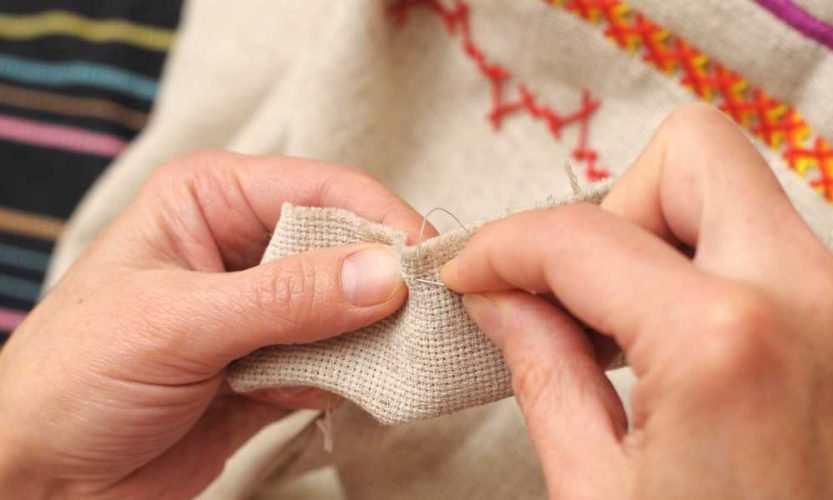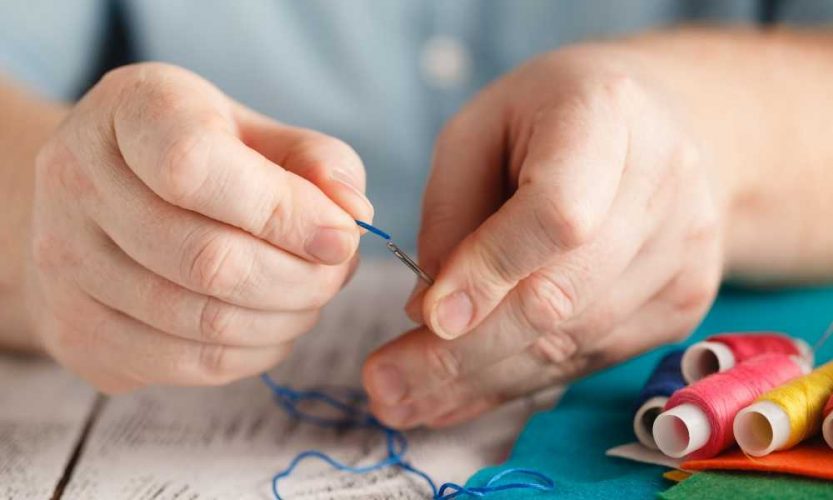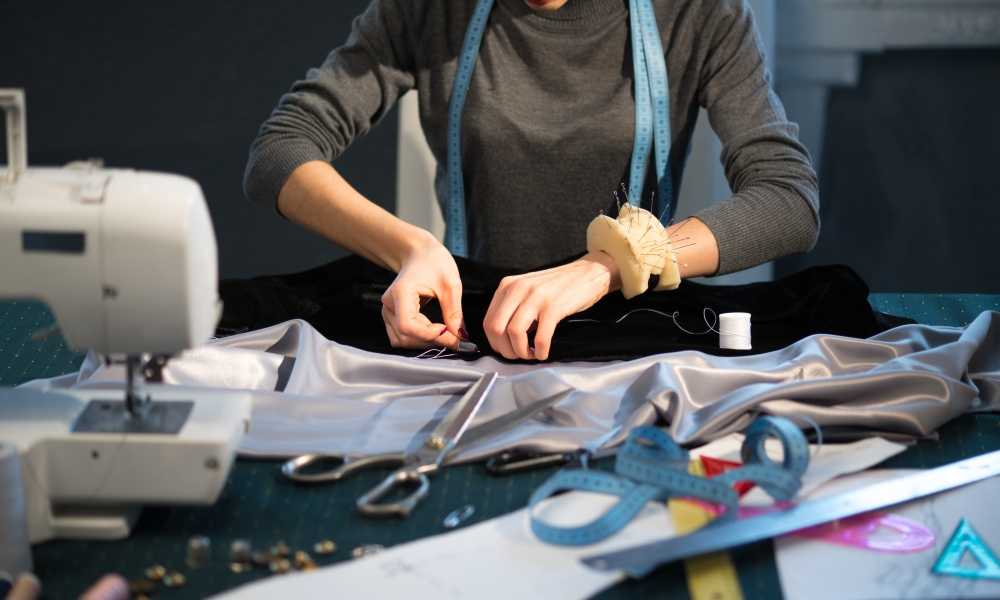How To Serge by Hand?
One of the best ways to get a finished edge on your sewing project is with a serger, but what if you don’t own a serger? Have no fear! There are still several ways that you can give your projects a professional, finished look without a serger, as mentioned below.
Pinked Seams
One of the easiest ways to avoid unravelling and finish your seams is with pinking shears. Simply use pinking shears to clip along the edges of your seam before pressing.
Yes, it really is that simple. You can also get a pinking blade for your rotary cutter, which makes this process even easier and faster. This method is ideal for woven fabrics that will not be washed/dried very often. However, it is not recommended for loose weave fabrics such as linen.

Zig-Zag Seams
What if you don’t have a serger or pinking shears? You can do a zig-zag seam on your standard sewing machine. Most machines come with a zig-zag stitch option, and you can adjust the length/width. Do some experimentation with the various settings until you find one that you’re comfortable with; then, write it down somewhere that you can easily go back to it.
There are two ways that you can finish your seam with a zig-zag stitch.
- Sew the seam using the proper seam allowance, go back and zig-zag stitch right next to it, and then trim away the excess fabric. This method is idea for curves such as armholes and princess seams. This is very similar to the effect that you’d get with a serger and will eliminate most unravelling.
- Zig-zag the edges before you sew the seams together. This method is ideal on straight seams and seams that you may have difficulty trimming.
Regardless of how you do it, zig-zagging your seams is the most common way to finish a seam if you don’t have a serger.
Turn and Stitch
This method of finishing a seam without a serger was most common among seamstresses before the zig-zag stitch was available on sewing machines. This method is an excellent way to get a seam that is clean and finished.
This method is fairly easy: Simply sew your seam with the proper seam allowance. Then, turn the raw edge of your seam allowance at about 1/8”. Press and stitch down. This method is quite economical because it only uses straight stitches, which means it doesn’t use a lot of thread.
Machine Overcast
Most sewing machines come with a variety of options, including an overcast stitch. Most machines require the use of an overcast foot to do this stitch, but it can be done with the all-purpose foot. Simply sew the overcast stitch at the seam allowance and trim away the excess.
This is a great option because it allows you to sew the seam and the zig-zag at the same time instead of having to take an extra step. The only “extra” work in this case is trimming away the excess fabric.

Hong Kong/Bound Seams
This method is fairly easy and works well for an unlined jacket. If you’re sewing an unlined jacket, the other methods won’t be as clean. This method is ideal for heavyweight woven fabrics because it doesn’t change the way the garment drapes.
French Seams
A French seam is one of the best ways to finish a project. You can be sure the garment is sturdy when you use this seam because all seams are sewn twice. This makes it ideal for children’s clothes.
This seam is best for straight seams, but should not be used for curved seams. In addition, this type of seam is best for lightweight woven or sheer fabrics.
As you can see, it is possible to get by without having a serger sewing machine. Most standard sewing machines have options that work quite well. However, I would not necessarily recommend trying to serge a project by hand, as it would get tedious and complicated. Sewing should be fun, not a source of stress

